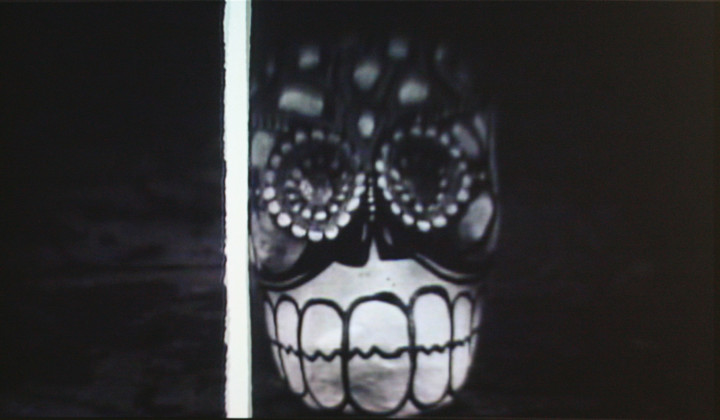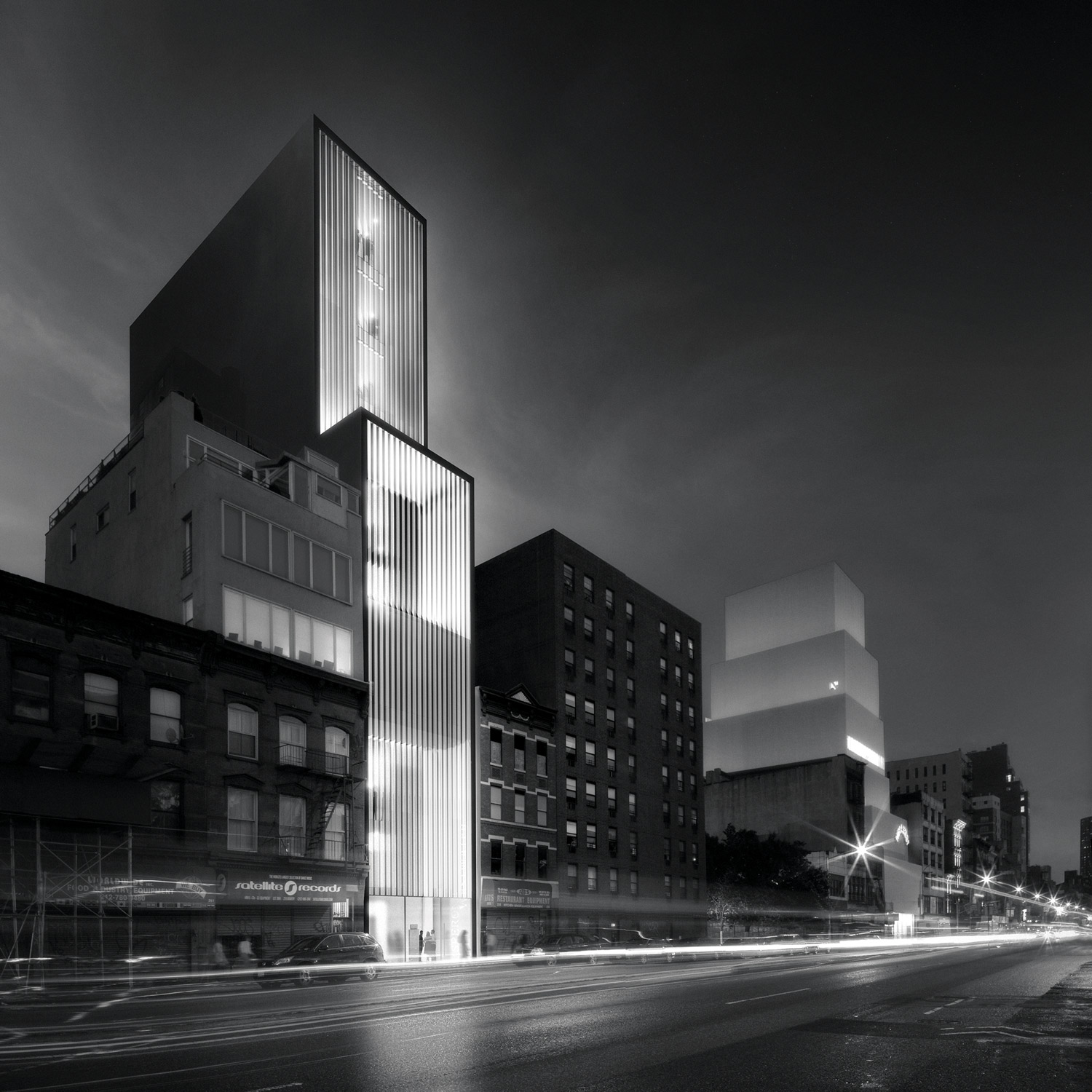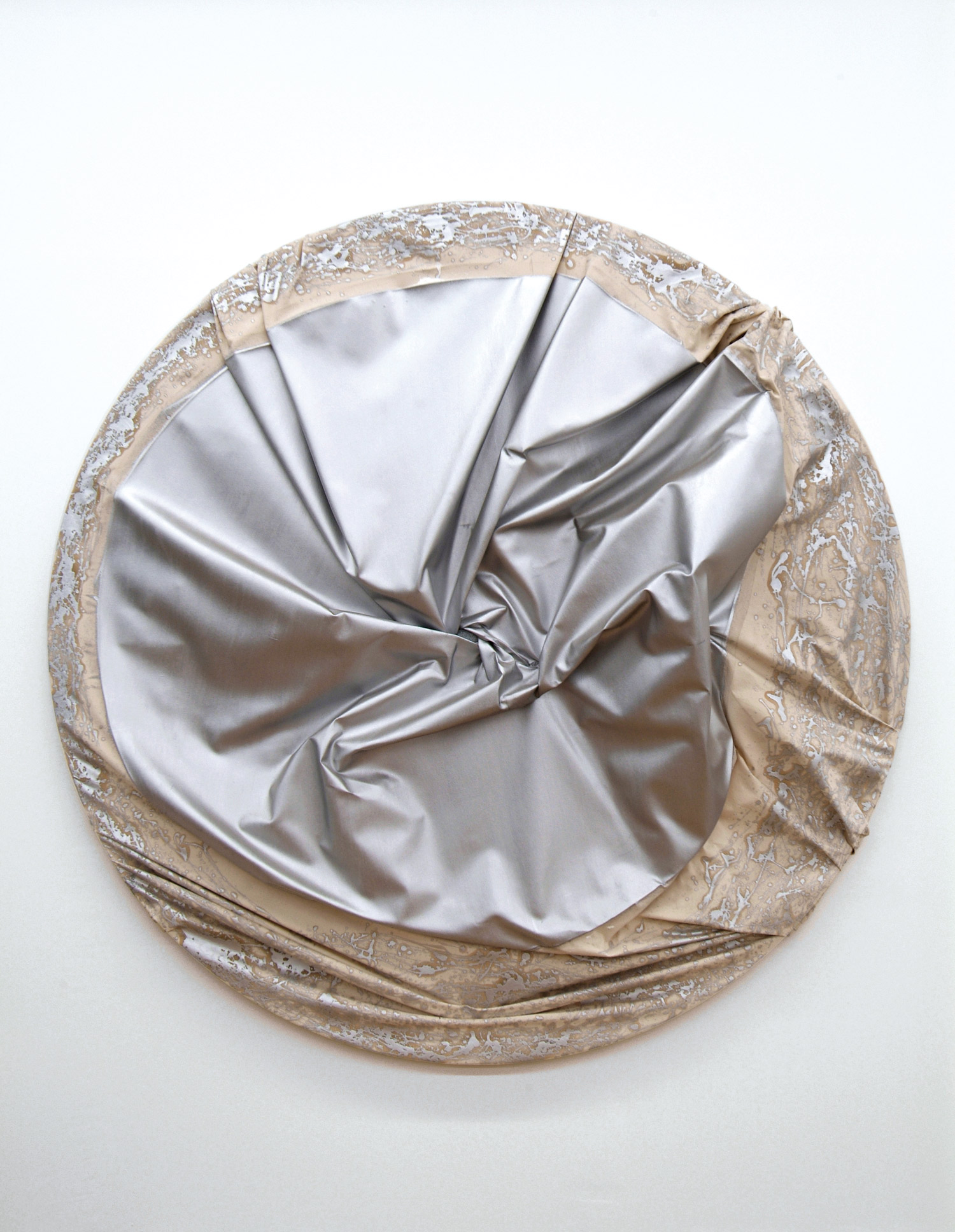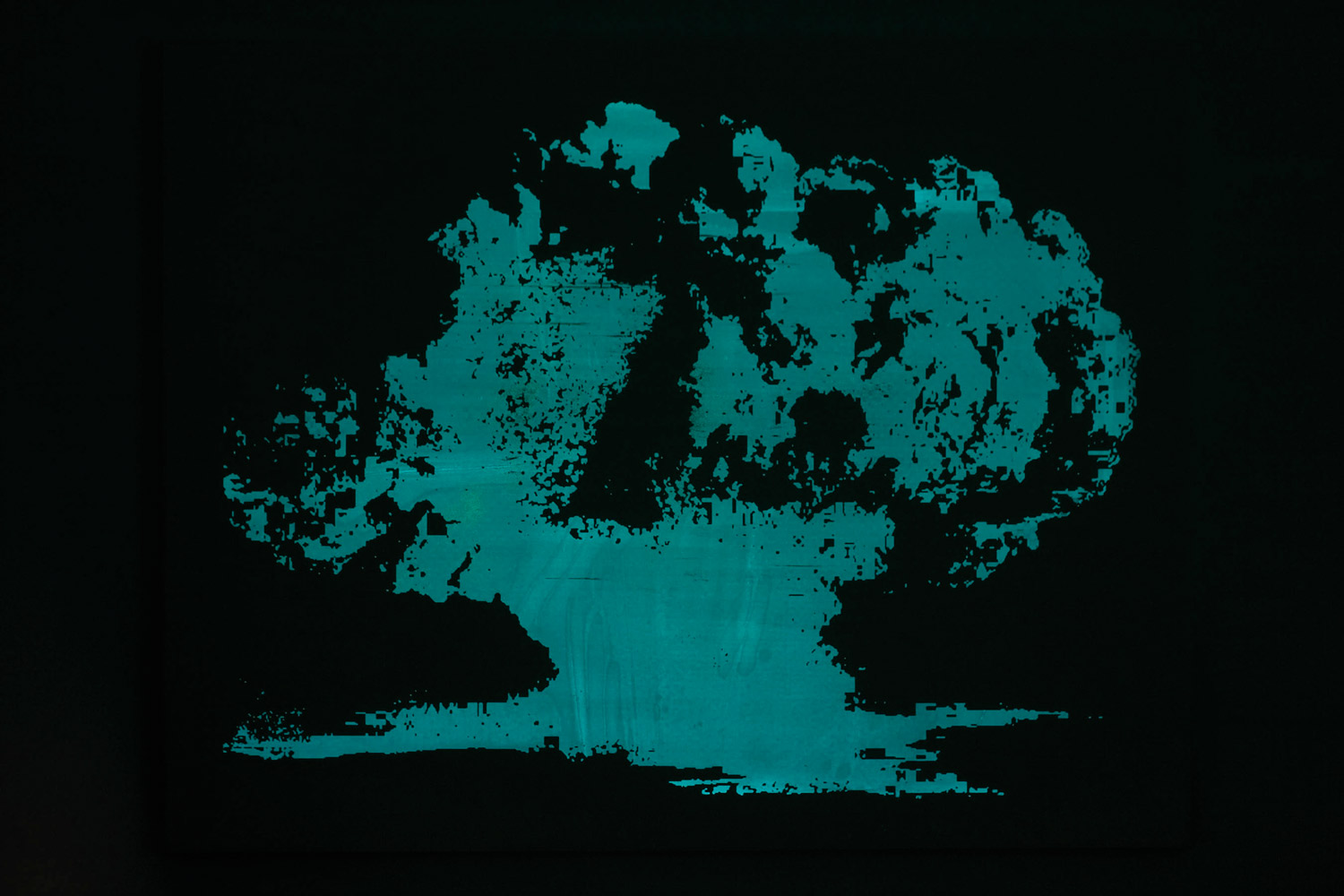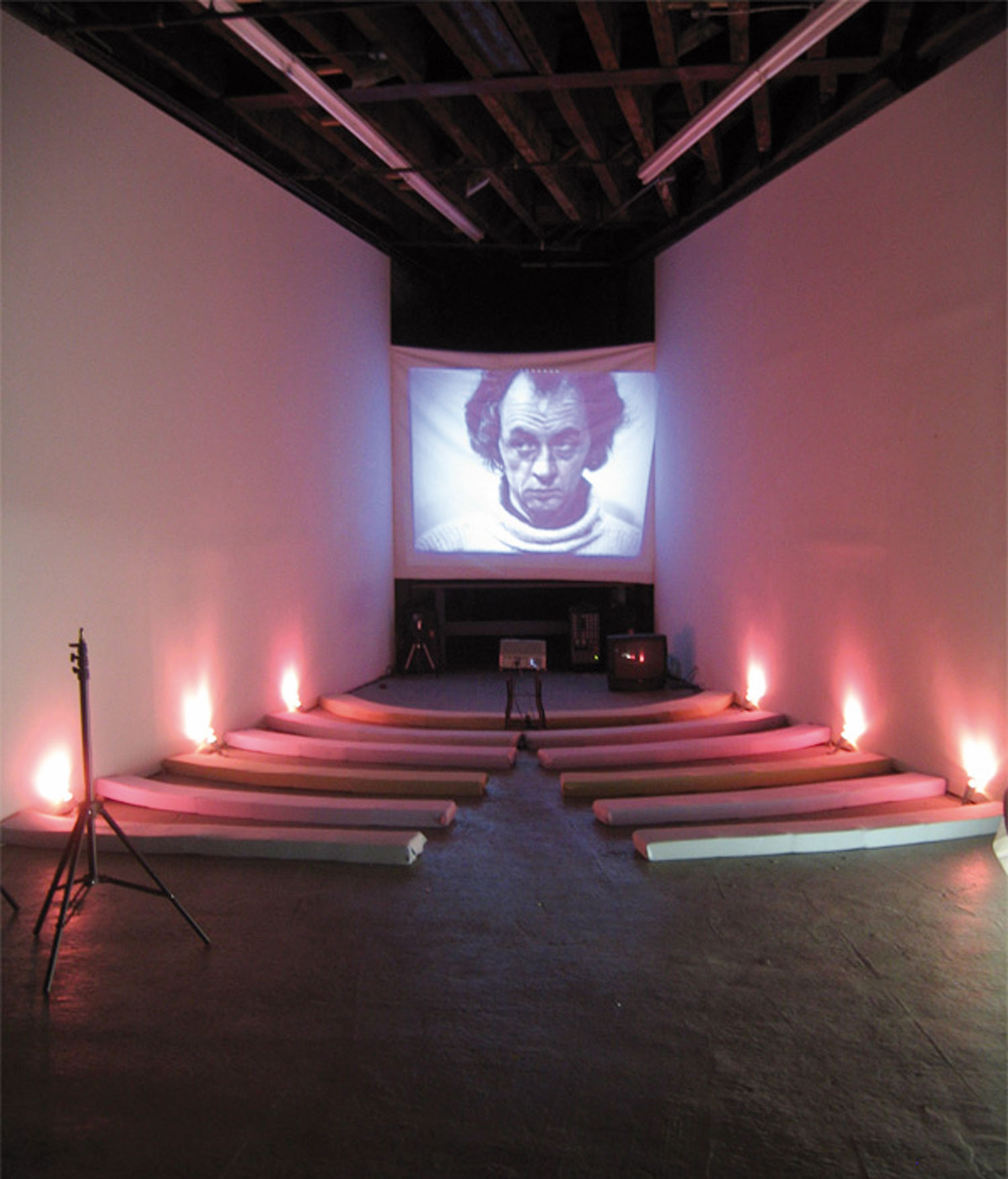
Over the past several years, New York-based artist Amy Granat has become known for looped, black-and-white film installations of stuttering lines and flashing shapes, which she makes by assaulting 16mm film stock — scratching the emulsion, punching holes in the celluloid, or treating reels with chemical baths. When the distressed films pass through projectors with their audio outputs connected to guitar amps and distortion pedals, a dense soundscape of popping, hissing and percussive rumbling adds discordant sonic ambience to the stark emotional tenor of her works.
While these seemingly abstract installations often make oblique reference to particular places, figure, or stories with autobiographical significance, Granat has of late turned to more concrete explorations at the limits of narrative filmmaking or personal cinema. A new, silent 16mm-film, 2+1+1+2 (for Niki) is the latest in a number of films Granat has made dedicated to artist Niki de Saint Phalle who died in 2002. Just as Granat has done with filmmaking, Saint Phalle attacked the process of painting in her infamous “shooting paintings” from the early ’60s. She would shoot a rifle at a wooden board with paint-filled cans attached to it and covered with a layer of plaster; the wounded cans would spill color onto the surface to create the work. In an earlier tribute film to Saint Phalle called Niki (2007), Granat and artist Emily Sundblad are seen practicing at a shooting range and then taking aim towards the horizon over the ocean in Malibu, California, where some of the “shooting paintings” were made. 2+1+1+2 (for Niki) references one late work by Saint Phalle in particular: La Cabeza (1999), an outdoor sculpture of a skull in the Mexican Day of the Dead tradition, rendered large-scale at over 14 feet high, weighing 6 tons and covered with a kaleidoscopic mosaic of glass pebbles, tumbled stones and brightly colored or mirrored tiles. As her homage to Saint Phalle, Granat filmed a much smaller, traditional Dia de los Muertos skull. Using mainly black-and-white film with a small color section of deep blues, Granat edits the static straight-on or profile views of the skull and explores other cinematic effects by varying light levels, making superimpositions, and scratching lines onto the film. Saint Phalle’s La Cabeza can be entered from an opening in the back of the skull where there is a small, dark space for contemplation with a built-in seat. Perhaps building on her experience of being inside Saint Phalle’s sculpture, to make related photograms, Granat went into a completely dark room and blindly cut photo-sensitive paper into irregular shapes onto which she placed various personal objects such as her set of keys, earphones, film, and editing equipment. Just as Saint Phalle’s rifle shots made a painting untouched by a brush, a quick burst of light then sets the silhouettes of the objects onto the paper, making a cameraless record, in negative, of each grouping.
Continuing Granat’s longstanding interest in making connections to earlier avant-garde figures and taking into consideration Granat’s view of her filmic manipulations of light and shapes as more of a painterly endeavor, 2+1+1+2 (for Niki) can be considered an elegiac still-life that quietly points to an often misunderstood artist such as Saint Phalle and, more generally, it becomes an intimate paean to art-making in and against our contemporary context.

